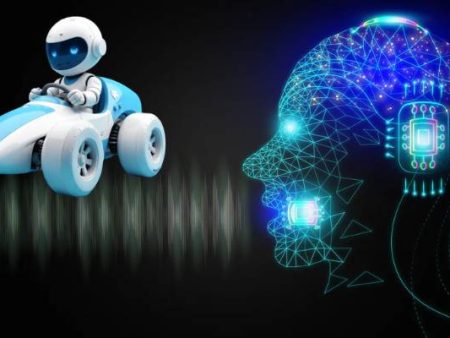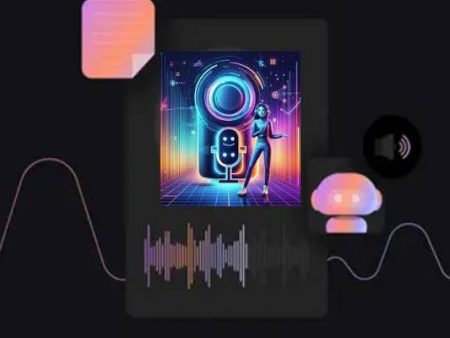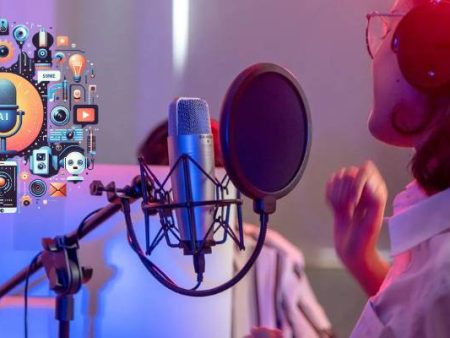There’s something intimate about listening to an audiobook. A voice in your ear, pacing your imagination, guiding you through the twists of a thriller or the tenderness of a memoir.
Traditionally, those voices belonged to professional narrators—actors who could shade meaning with a pause or pull tears with a quiver in tone. But now, artificial intelligence is stepping into the recording booth.
The rise of AI voice technology is reshaping how audiobooks are made, distributed, and consumed. Depending on who you ask, it’s either the dawn of greater accessibility and innovation, or the start of a crisis for voice actors and artistic authenticity.
This piece takes a deep dive into how we got here, what’s sound down tech behind the surge, the potential benefits and dangers (including the dark deepfake risks), and my own conflicted feelings as someone who both loves books and keeps an eye on technology’s expanding reach.
Audiobooks by the Numbers
Let’s ground ourselves in data before emotions take over. The audiobook market has been exploding in recent years.
- In 2022, the U.S. audiobook industry reached USD 1.8 billion in revenue, according to the Audio Publishers Association.
- Global audiobook revenue is projected to surpass USD 35 billion by 2030, as noted in Grand View Research.
- Nearly half of Americans aged 12 and up have listened to an audiobook, reflecting how mainstream the medium has become.
So the demand is enormous, and it’s not slowing down. The question is: who—or what—will supply the voices?
The Technology Driving the Change
From Robotic to Realistic
Earlier generations of text-to-speech engines were stiff and monotone. Nobody would sit through a 12-hour novel voiced by something that sounded like a GPS from 2005.
But neural network breakthroughs like Google’s WaveNet, Amazon Polly, and startups like ElevenLabs shifted the landscape.
These models can capture rhythm, inflection, and even emotion. They don’t just read words; they perform them, at least to some degree.
The sounds tools experiment happening today allows AI to attempt anger, joy, sarcasm, or intimacy. Some of it feels convincing, some of it uncanny, but the progress has been undeniable.
The Training Data Question
Here’s where things get sticky. Many models are trained on publicly available recordings—podcasts, YouTube videos, audiobook samples—sometimes without clear licensing.
That means human narrators’ work may already be fueling the systems that could one day replace them. That’s tech behind the curtain people don’t always want to look at too closely.
It raises thorny ethical questions about ownership, fairness, and respect for artistic labor.
Why Publishers Are Tempted
Let’s not pretend this isn’t about money and speed. Producing a professional audiobook with a human narrator can cost $3,000 to $5,000 for a finished 10-hour title. Add editing, mastering, and distribution, and the bill climbs higher.
AI offers an alternative: generate an audiobook in a matter of hours, at a fraction of the cost. For self-published authors who can’t afford narrators, this is a lifeline. For major publishers, it’s a way to scale backlogs of titles into audio faster than ever.
And in a market where demand is surging, scalability is everything.
The Benefits: Access, Affordability, and Experimentation
I don’t want to ignore the upsides, because they’re real.
- Accessibility: AI voices can bring niche books into audio that never would’ve been recorded otherwise. A small poetry collection, a dense academic work, or an indie novel—suddenly, they can be heard.
- Affordability: Lower production costs can make audiobooks cheaper for consumers.
- Global Reach: AI can translate and narrate books in multiple languages quickly, breaking barriers for international readers.
- Customization: Imagine choosing from multiple voices to suit your taste—male or female, British or American accent, calm or animated.
This flexibility opens doors for more people to engage with books. That matters, especially for younger or more diverse audiences who may not connect with traditional formats.
The Dark Deepfake Shadow
But with opportunity comes risk. The dark deepfake potential of AI voice tech looms large.
It’s not hard to imagine someone generating a convincing audiobook narrated by a celebrity who never signed on. In fact, cloned voices of well-known actors have already been used to produce unauthorized content on platforms like TikTok and YouTube.
The manipulation voice angle also worries me. A familiar voice can carry authority, trust, and emotional resonance. Using it without consent—whether to sell a product or spin a narrative—edges into psychological exploitation.
For authors, this also creates vulnerability. Could someone generate a fake audiobook of their work, release it online, and profit before the official version is out? The legal frameworks aren’t yet robust enough to prevent that.
The Human Element: What Gets Lost
Numbers and efficiency aside, there’s an intangible element that AI still struggles with: true empathy.
Human narrators don’t just read; they interpret. They understand subtext, cultural nuance, irony. They improvise tiny inflections based on instinct. That breath before a devastating reveal, that subtle smile heard in the voice of a rom-com heroine—it’s hard to code.
I’ve listened to AI-narrated samples. Some impressed me. Others felt hollow, like they hit the right notes but not the right soul. For long, emotionally complex works, the absence of humanity wears thin.
Storytelling isn’t only about efficiency. It’s about connection.
How Narrators Are Responding
Professional narrators aren’t silent about this shift. The National Association of Voice Actors has raised alarms about job displacement, unfair training practices, and lack of consent.
Some are exploring ways to license their voices ethically—offering digital twins for specific projects, under contract, with royalties. Others refuse outright, seeing it as an existential threat to their craft.
This split reflects the broader industry tension: adapt or resist.
Regulation and Ethical Guardrails
Where do we draw the line? Governments and industry bodies are scrambling to catch up.
- The U.S. Federal Communications Commission recently banned AI-generated voices in robocalls, citing fraud concerns (FCC announcement).
- The EU’s AI Act requires disclosure when synthetic voices are used in certain contexts.
- Some publishers, like Apple Books, openly disclose when AI narrators are employed.
These steps are helpful, but they’re patchwork. Clearer rules are needed around consent, attribution, and commercial use.
My Take: Somewhere Between Hope and Hesitation
Here’s where I land, though I admit my feelings shift often.
I think AI has a place in audiobook production, but not as a wholesale replacement. Use it to bring obscure books to life, to experiment with formats, to expand accessibility. But don’t let it erase the artistry of human narration.
I’d argue for a “tiered” model:
- AI for scale: Indie titles, niche content, academic works.
- Humans for artistry: Bestsellers, literary fiction, memoirs, children’s books.
And above all, transparency matters. Listeners deserve to know if what they’re hearing is human or machine.
The Future: Blending Human and Machine
What excites me is the possibility of hybrid approaches. A narrator might license their voice for AI to handle background narration, while stepping in personally for the most emotional passages. Or an author might co-create a unique AI voice that fits their story world.
These kinds of sounds tools experiment already exist, though in early stages. They could evolve into a collaborative form of storytelling, merging precision and passion.
If we handle it responsibly, AI could expand—not shrink—the audiobook universe. But if we let profit and convenience steamroll artistry, we’ll lose something precious.
Conclusion: Stories Deserve Care
Audiobooks aren’t just a market trend; they’re cultural artifacts. They carry stories across generations, into cars, kitchens, and headphones worldwide. AI voice technology is undeniably production transforming, but we must ask: transforming into what?
We stand at a crossroads where we can choose to amplify voices, scale storytelling, and democratize access—or risk devaluing the very qualities that make stories worth listening to.
For me, it comes down to empathy. Machines can mimic, but only humans carry lived experience into their delivery.
If we balance both—AI for breadth, humans for depth—we may just find a future where every story has a voice, without silencing the ones who’ve carried the craft until now.


